On the night of April 8th, 1940, the population of Norway slept soundly, unaware that the might of Hitler's war machine was poised to crash on their shores. Warships loaded with troops were just off the country's major cities, hoping to seize them with minimal opposition thanks to the low readiness of Norway's military. The official justification for the German operation was the Allied mining of Norwegian coastal waters to stop the flow of iron ore out of the port of Narvik, although the first German ships sailed before the British did.
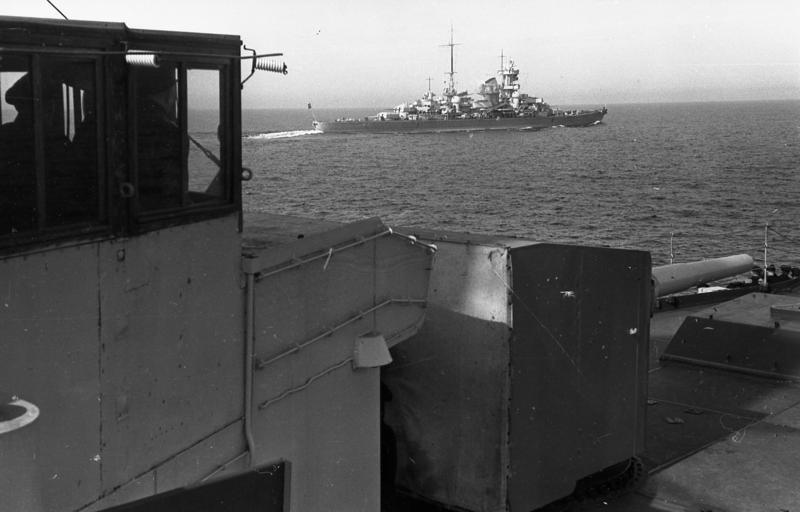
Blucher on the way to Oslo
The main target of the German invasion was the capital, Oslo, which would be taken by 2,600 troops carried aboard the brand-new heavy cruiser Blucher, "pocket battleship" Lutzow, light cruiser Emden and three torpedo boats, Albatros, Mowe and Kondor, joined by a batch of R-boat minesweepers. They had sailed from Kiel early that morning, as they had by far the shortest distance of the various forces to go, although the passage wasn't entirely smooth. While transiting the Kattegat, torpedoes were spotted and successfully dodged. They came from the British submarine Triton, which quickly reported their presence to the Admiralty. More submarines were sent into the area, but none were able to attack before the Germans reached the Oslofjord, the long inlet that leads to the city.
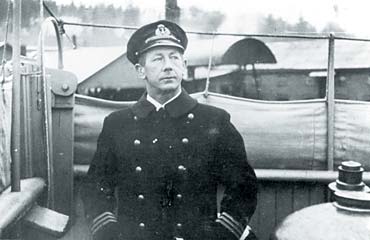
Leif Welding-Olsen
Patrolling at the mouth of the Oslofjord was the auxiliary Pol III, a whaler that had been taken over by the Navy and fitted with a 76 mm gun and a searchlight. An hour before midnight, her crew sighted shapes through the mist, and the Captain, Leif Welding-Olsen, ordered the searchlight switched on. It revealed several large warships, much to the surprise of the crew, and one of them, the torpedo boat Albatros, broke off to intercept. She illuminated Pol III and signaled that they were to stop their engines and refrain from using the radio. Leif Welding-Olsen disregarded these orders, raising the alert via radio despite German jamming attempts and firing a warning shot. In the confusion, Pol III rammed Albatros, doing minimal damage, but leaving two of her crew on the deck of the German torpedo boat. Welding-Olsen then fired the warning flares for the ships and shore batteries nearby, two red and one white, and hailed Albatros, demanding she either surrender or leave Norwegian waters. The Germans opened fire, wounding Welding-Olsen and destroying the lifeboat. An attempt to abandon ship failed when the remaining boat foundered, and while most of the crew were rescued by Albatros before she set Pol III on fire, Welding-Olsen was not among them. He was the first Norwegian casualty of the war.
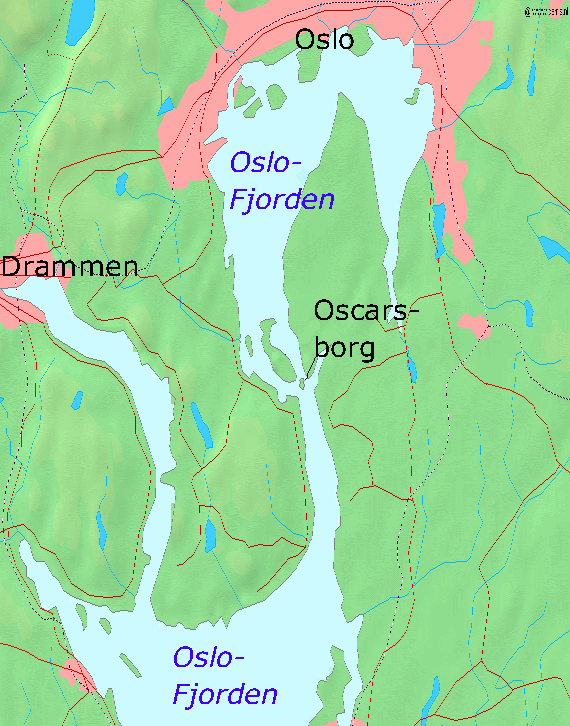
The Oslofjord
But Welding-Olsen's death was not in vain, as he had alerted the main defenses of the Oslofjord, the coastal forts. These mostly dated back to the 1890s, and while they were largely unmodernized, they could still pack a punch in the confined waters of the fjord. Unfortunately, they were only lightly manned, particularly as the government had decided to call up all of the recently-discharged reservists at the start of the war, and their terms had recently expired, leaving them in the hands of raw recruits and men a decade or more out of practice. Even though several were essentially empty, the remaining ones would still fire very slowly. The minefields that would complete the defense hadn't been laid, and the minelayers dedicated to placing them didn't even start loading their deadly payloads until mid-day on the 8th. The outer forts, on the islands of Bolaerne and Rauoy, mounted seven 15 cm guns and four 12 cm guns between them, but their crews had orders to fire warning shots first, which would dramatically reduce their engagement time against fast-moving ships.
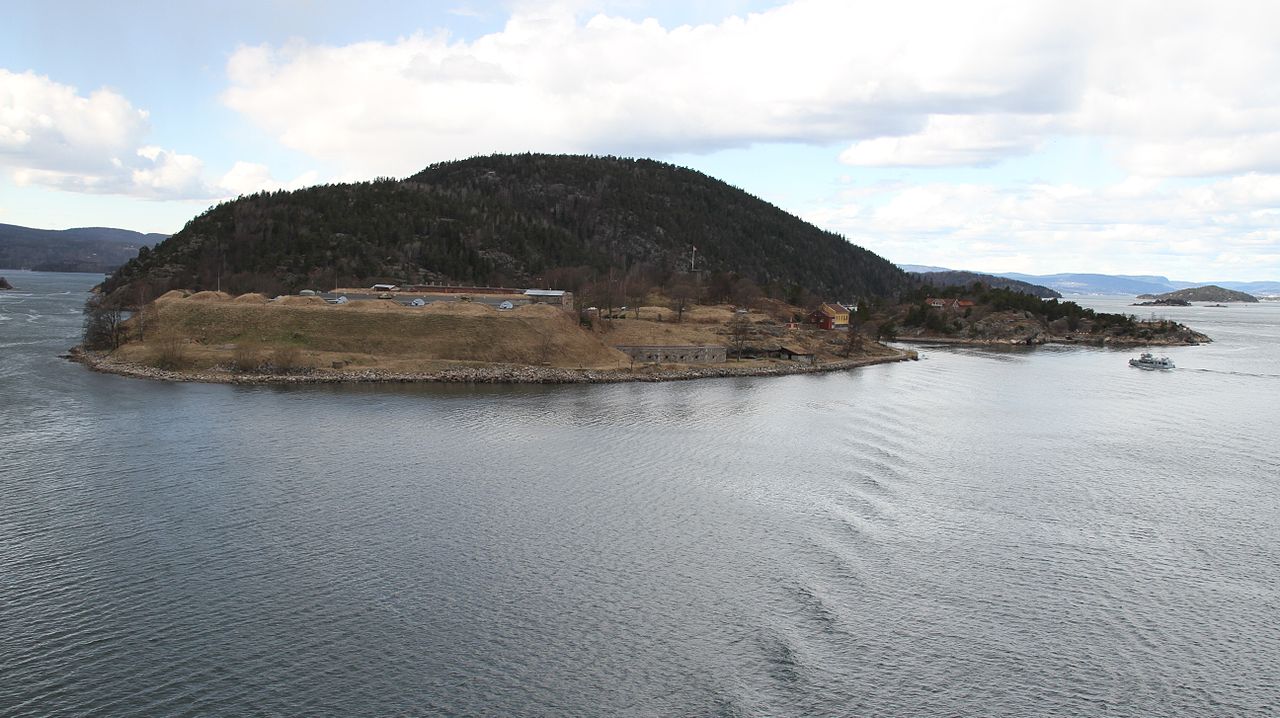
Oscarsborg from the south
All of this meant that the garrison on Bolaerne got off only one blank round before the fog shrouded their targets, while Rauoy managed one blank, one live warning shot, and four rounds on target before the Germans steamed out of range. The R-boats then came alongside to take troops to capture the two islands, as well as several other positions in the outer Oslofjord. But then it was time for the ships to head into the Drobak Narrows, a passage about six miles long and a mile wide that connected the inner and outer parts of the Oslofjord. It was dominated by Oscarsborg Fortress, located on an island at the north end of the narrows, and equipped with three 28 cm Krupp guns, as well as three 15 cm guns on the mainland and a torpedo battery. The commander of Oscarsborg, Oberst Birger Eriksen, had made sure that the equipment was well-maintained, despite the lack of funds for upgrades and the fact that he had only a third of his required personnel. As a result, only two of the 28 cm guns were manned, and they would probably only have one shot each.
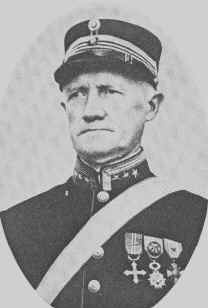
Birger Eriksen
For some reason, Blucher led the column into the narrows, despite the threat of mines and guns and the fact that all of the command personnel were onboard. Any of the other ships would have been a better choice, but the German commander made his decision, and even refused to light all of his boilers. In the predawn light, Eriksen's gunners could see the cruiser, and took careful aim. Technically, he was supposed to fire warning shots, but decided against it, figuring that the biggest risk was to his career, which, at 65, was a minor sacrifice. To give the target a chance to back out, he ordered the sights set to 1400 m, even though it would be closer when he opened fire. This would ensure the shells struck well above the waterline, minimizing the risk of the ship sinking. If it kept coming, then the torpedo battery would take care of it.
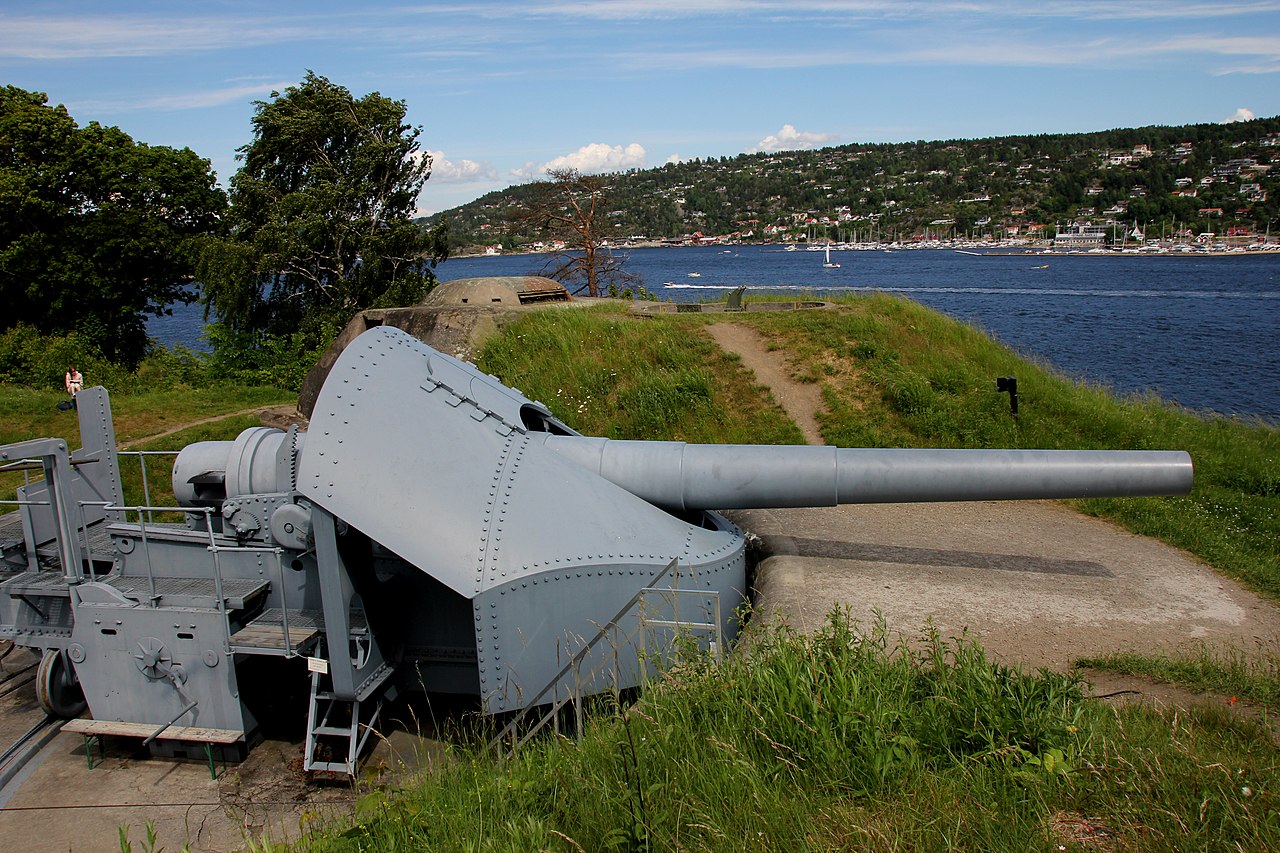
One of the 28 cm Krupp cannons at Oscarsborg
At 04:21, Eriksen gave the order to fire,1 and both guns spoke. The first shell flew low over Blucher's bridge and struck the base of the fire-control tower, disabling most of the cruiser's fire-control equipment. The second struck aft of the funnel, destroying one of the cruiser's 10.5 cm guns, killing a number of the troops onboard and wrecking the hangar. Fires broke out, fueled by the planes, fuel and ammunition stored in the hangar, while power was lost throughout much of the ship, and the darkened engineering spaces filled with smoke. The captain authorized his gunners to return fire, but in the chaos, the main guns weren't fired at all, and the secondary guns shot at whatever they could see, which was usually a telephone pole or a tree. No Norwegians were injured, but the smaller guns of the shore batteries were quick to reply, pumping two dozen 15 cm shells and numerous smaller rounds into the ship and starting more fires, as well as severing communications from the bridge to the engines and the rudder.
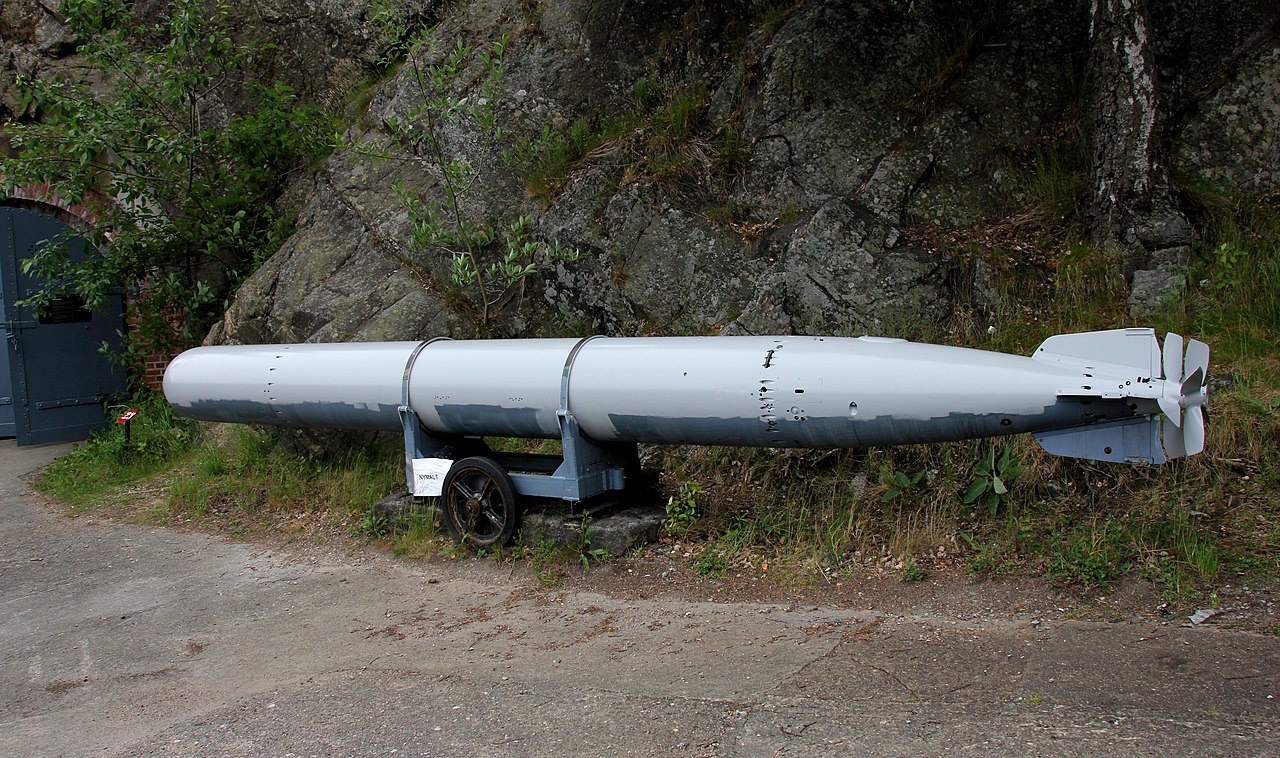
A torpedo from Oscarsborg
But although Blucher was in bad shape after her encounter with the guns at Oscarsborg, her wounds were far from mortal, and the crew began to fight back against the fires. However, as she went deeper into the narrows, she came within range of the torpedo battery, which was built into the cliff face. Three torpedo cradles would fire their fish in a fixed direction on command from an observation post, the torpedoes themselves having been delivered from Robert Whitehead's original factory in Fiume in 1900. They had been fired hundreds of times over the previous four decades,2 but they had been carefully maintained, and the Norwegians were confident in them. The sights were originally set for seven knots, but before the second was fired, the officer in charge realized that this was too fast and reset them for five, in both cases firing at Blucher amidships. Both torpedoes worked perfectly, the first striking near the forward turret, while the other detonated amidships, knocking the engines offline. The cruiser drifted deeper into the fjord, and the captain chose to anchor her while they tried to get the engines back on line.
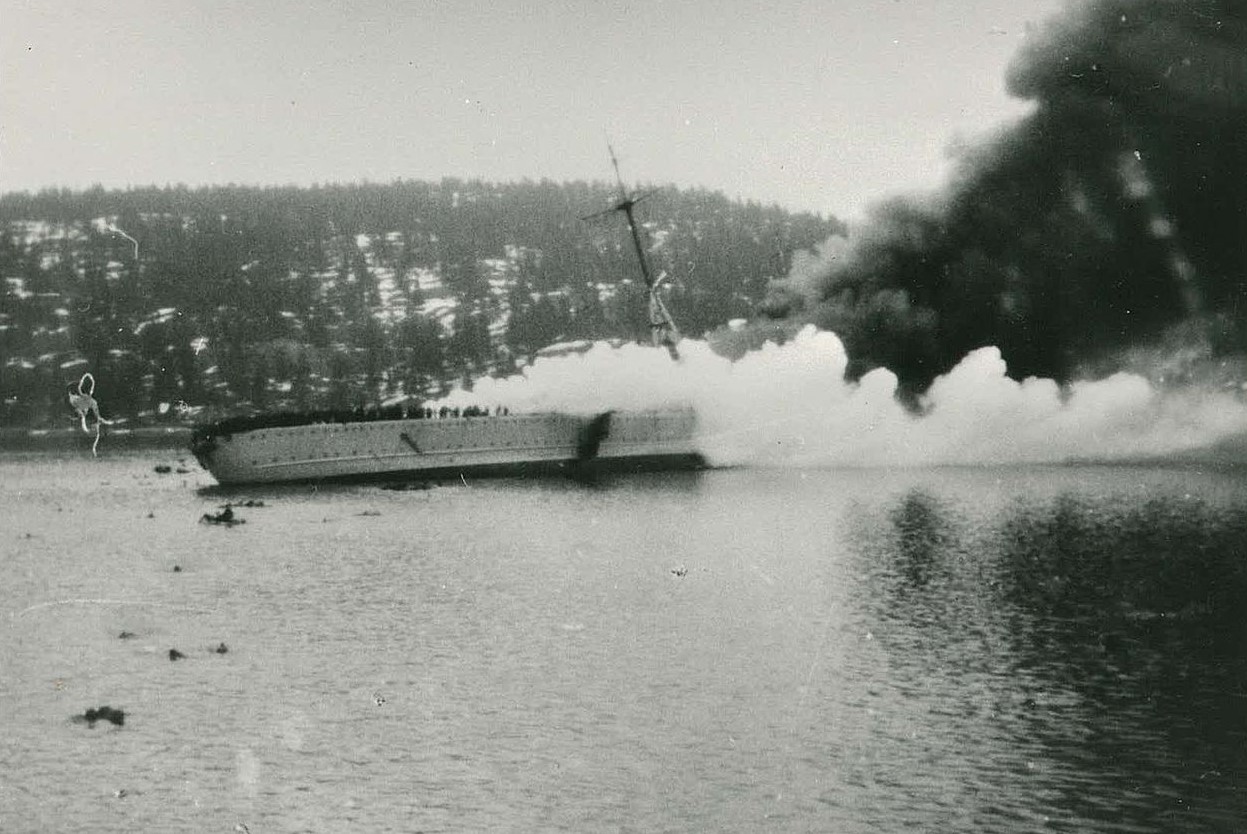
Blucher burns
Behind Blucher, the 15 cm guns opened up on Lutzow. One shell hit the center gun of her forward turret, spraying the inside of the turret with shrapnel and putting it out of action. Two more hit further aft, and Lutzow's captain, now in command of the group, chose to turn back on hearing the torpedo hits on Blucher, which he assumed were from mines. Lutzow tried to return fire, but her attempts were no more successful than those of the lead ship, and careful three-point turns saw both her and Emden heading back down the narrows.
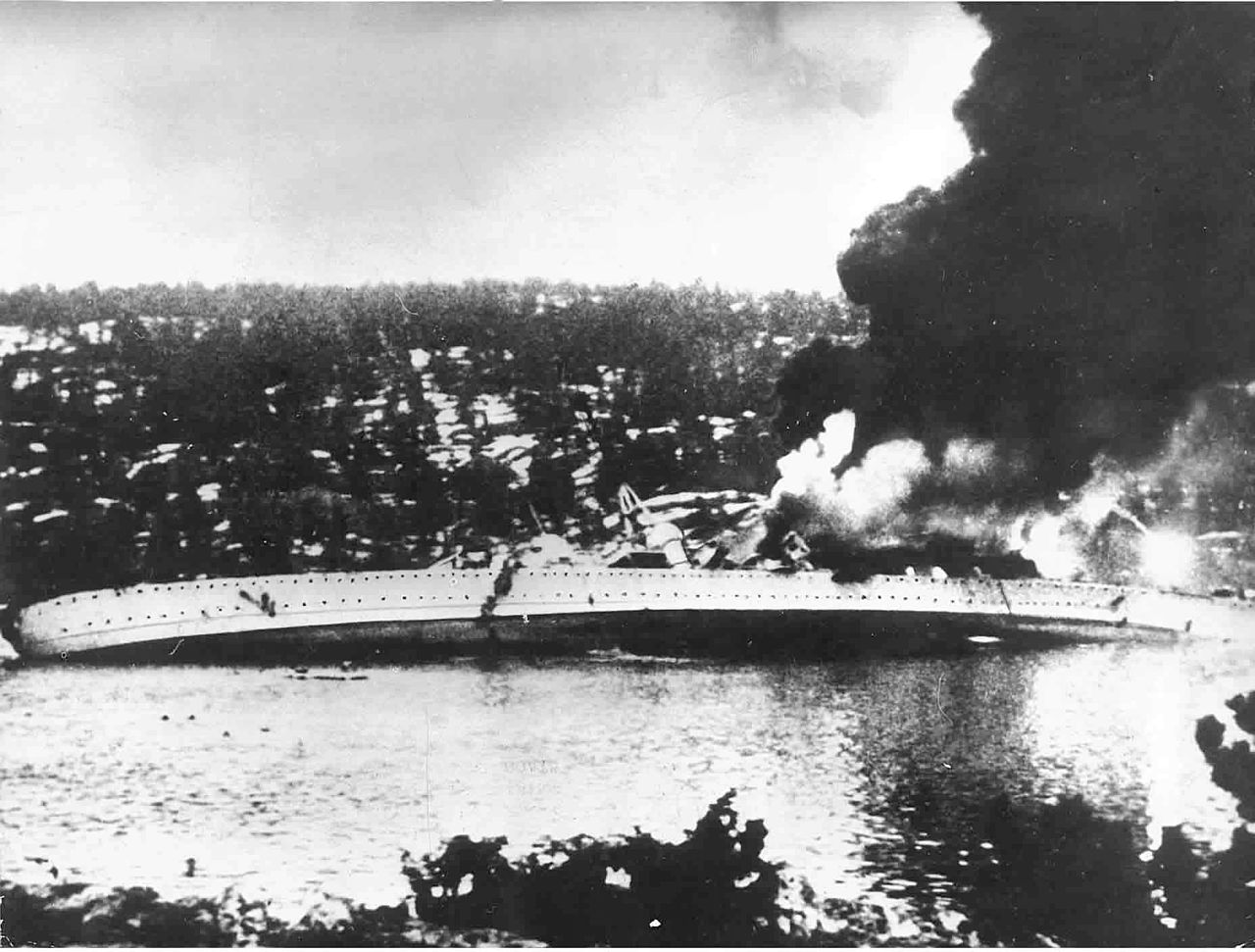
Blucher turns over
Onboard Blucher, the green crew struggled to fight the fires and flooding, hindered by splinter-damaged hoses and continual explosions as the flames reached ammunition stored abovedecks. Communications broke down, but for the first hour, the officers thought the ship could be saved. Then the fire set off one of the 10.5 cm magazines, and the list began to increase rapidly. Orders were given to abandon ship, but shockingly for the German Navy, preparations for destroying secret documents were inadequate, and many were retrieved later. Almost all of the boats had been destroyed, and the one survivor damaged on rocks while ferrying wounded ashore, leaving most of the men to swim several hundred meters in the icy waters. As the Landsers were ordered on deck, they failed to close doors behind them, hastening the spread of disaster. Many of these men couldn't swim, and their kapok life jackets had been strapped to the railings, where most were destroyed by the fires. Soon, the list had passed 45°, and word was passed to abandon ship. As Blucher rolled over, the fires reached the oil floating on the fjord, igniting it, and then she turned turtle and slipped below the waves at 0625.
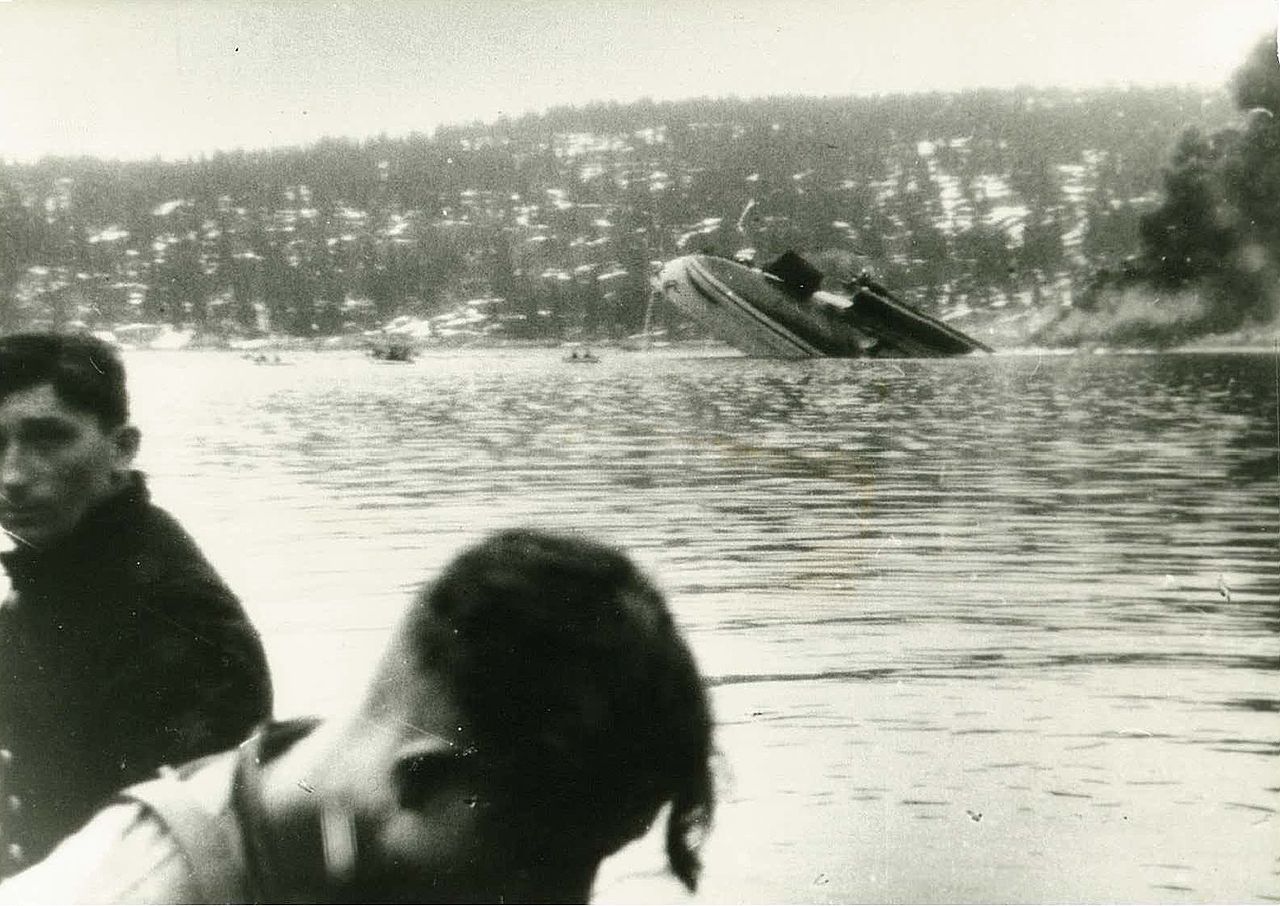
Survivors watch as Blucher's stern slips beneath the surface
The survivors gathered on the beaches nearby, where most were taken prisoner by Norwegian soldiers, although the largest group was left to their own devices a few hours later when the Norwegians withdrew. Others spent a day or two freezing on the shores of the Oslofjord before being rescued by Mowe and the R-boats. But somewhere between 350 and 400 men went down with the newest cruiser in the German navy, a victim of weapons built half a century earlier. Ultimately, Birger Eriksen's decision to fire would change the course of the war in Norway, thwarting German plans for a coup de main in the capital. The government would have time to evacuate and respond to the situation, and German hopes for a quick and mostly peaceful occupation would be dashed. But they would eventually get into Oslo, and we'll take a look at what followed the Battle of Drobak Sound next time.
1 According to legend, he confirmed it with the phrase "Visst fanden skal der skydes med skarpt!", which translates as something like "We damn well are going to fire" or "Devil take it, fire war shots!". This has become reasonably well-known in Norway, but isn't well-attested. ⇑
2 It was common at the time to fire practice torpedoes equipped with special heads that would float them to the surface at the ends of their runs. They'd be overhauled and returned to service, with an explosive warhead fitted if they were needed operationally. ⇑

Comments
Another movie recommendation! The King's Choice, a Norwegian film that has a B-plot that covers the Battle of Drobak Sound.
Birger Eriksen may have been just shy of retirement, but the torpedo battery was commanded by Andreas Anderssen, who had retired thirteen years earlier and been called back by his old comrade Birger on account of having served with that battery almost from the start. Seems to have still known his stuff.
Aragorn's comment that most of these soldiers have seen too many winters, or too few, seems to have been spot-on at Drobak Sound. Score one for the kids and the geezers.
There is something beautiful about, "We have fired the same torpedo on the same trajectory a hundred times, and we are very good at it by now."
@John
That was one of those unfortunate details that I'm well aware of, but that get cut because it breaks the flow of the narrative.
On the whole, Drobak Sound is one of my favorite actions ever, just for the sheer weirdness of it, and I'm glad I finally got to cover it at length.
From "The King's Choice" the sinking of the Blucher: https://youtu.be/YZ79i11JSnU
Shame that it was the Nazis who named the ship Blucher as I have always admired him as being a fighting general and a hands-on leader. In other words a great dude. His upholding of his word to the British was crucial in Napoleon's defeat at La Belle Alliance.
Cashiered out of service by Frederick the Great for insubordination, he worked as a farmer before eventually being recalled. Seriously wounded at the Battle of Ligny he was saved by the efforts of his aide-de-camp. He took the occasion of escaping death not for convalescence but istead to get right back into the fight...which he did with a strong whiff of schnapps about him. He certainly lived up to his moniker of "General Forward."
He ordered Gneisenau to get going with a corps or two to Waterloo thus fulfilling his promise to the British. The reputed words of Wellington of "Give me Blucher or give me night" with the Prussians then indeed showing up is the stuff of legend. (Yes, I realize Wellington might not have actually said these exact words as Blucher appeared in the early afternoon but still...)
And not to overlook the fact that he was leading his army on that day while 73 years old. So it seems fitting that the Danes were led by a couple of senior citizens.
All this is of course well known to Bean's readership, but it's always fun to recount just what a full spirted scrapper he was and how that fit in well, when it really counted, with Wellington's analytical and tactical mindset. One of the guys from history I would like to have alive for an afternoon's chat.
We don't always need personalities like his, but we definitely do on occasion and then they prove their worth a thousand times over.
Don't we still have reusable practice torpedoes? I distinctly seeing some exercise configurations for the Mk48. Although, perhaps we should be launching practice torpedoes more often, given the lower price to taxpayer per shot compared to missiles.
Exercise torpedos are a thing; they come in at least two varieties for surface ships. REXTORP (Recoverable Exercise Torpedo) have no propulsion; they just float back up to the surface. EXTORPs have propulsion and guidance; both are recoverable, despite the lack of an R in one variant. Pretty sure HWTs just have EXTORP varieties without the warhead, but not sure, to be honest.
I have often argued that wars are far more often lost than won. Winning implies that you have something worthy of praise to earn your victory, but wars are mostly comedies of error that are endured until one side or the other collapses under the weight of their own-goals.
This theory is brilliantly on display in this campaign.
@cassander,
I disagree with your message while agreeing very much with your specific point. Yes, wars, and more generally speaking most government or national scale actions, are usually just a matter of NOT making the obvious stupid mistakes. But, seeing as such a very high % of cases the stupid mistakes ARE made, I think we are forced to conclude that "not making the obvious mistakes" is actually really, really difficult. I'll wave a hand here at "seeing like a state". To wit that a state is generally 3/4 blind at seeing anything outside of what it's already programmed to see. And they are typically driven by internal forces to make decisions that usually deal very badly with reality. Or as Clauswitz put it: War is really very simple, but in war even the simplest things are extremely difficult.
The caption of the second image reads "Lief Welding-Olsen". Should be "Leif".
The legendary phrase is "Visst fanden skal der skydes med skarpt!" The last two words are important here - he's saying to fire "sharp" shots, that is, war shots; not blanks or warning shots.
I found a primary source for the day, but sadly it does not make any reference to the Devil; the entry is (as best I can make out the archaic and, for some reason, somewhat shaky handwriting) "Fire opened from both guns (illegible) from the fortress. The warship [Blucher] is hit in the bow and lies off the north island.".
Huh. I shall have to reprimand my Norwegian consultant who looked over this post when it went up. :-)
More seriously, I have a full book on the Drobak action now (recently published by USNI), but it didn't shed any light on the subject.
I looked through my old sent messages and found this:
So I think the blame must be laid elsewhere. : )
Ah. My apologies. I’ll blame my sources, I guess.
(I do really appreciate your help with this. And it reminds me that I need to write more of these.)
The history of Enigma suggests that the Kriegsmarine's procedures for destruction of sensitive material was insufficient at several critical points in time. Though to be fair, several of those incidents occurred aboard auxiliary weather vessels...